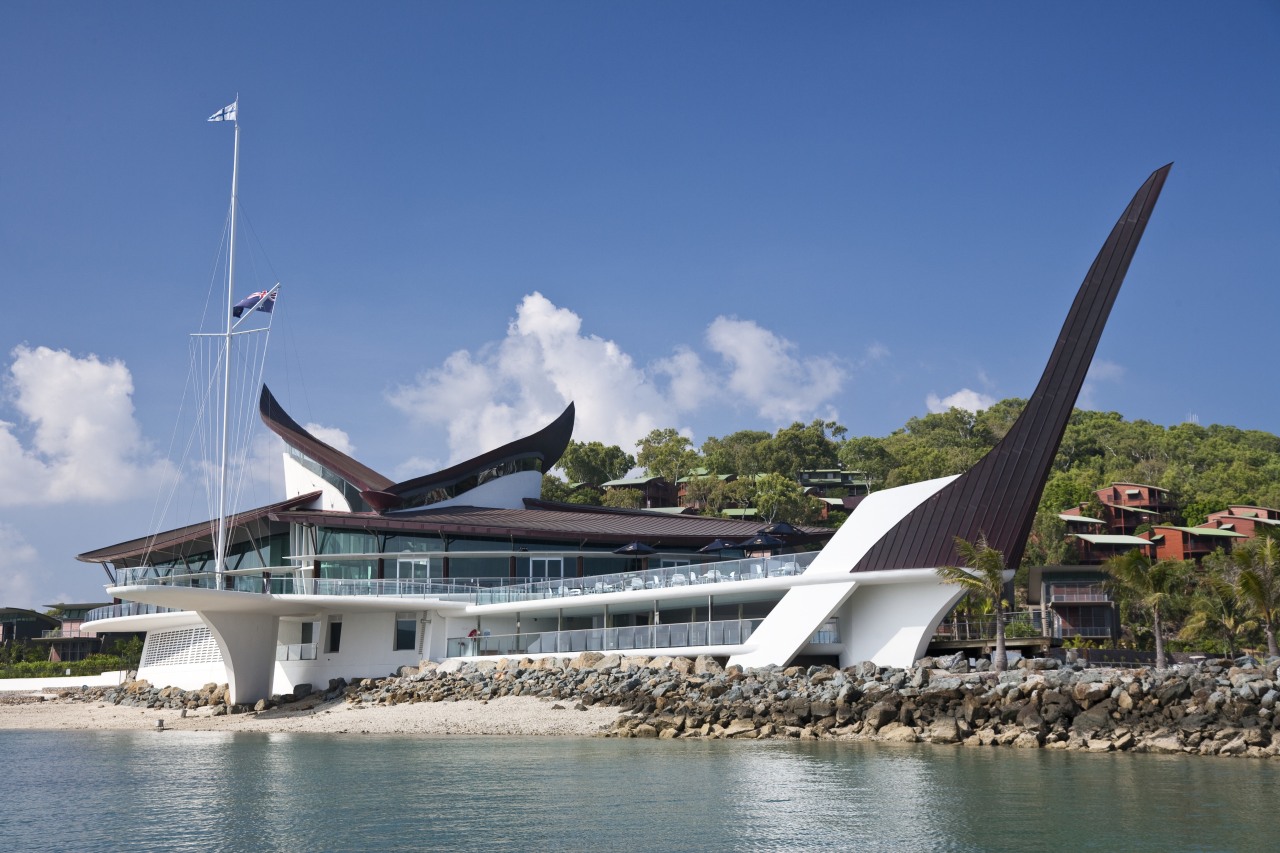Safe harbour
Sculptural profile creates challenges for structural engineer

The dramatic sculptural form of the Hamilton Island Yacht Club and Villas required the structural designers to push the boundaries in many areas. Opus International Consultants took on the significant challenges of the structural engineering, developing many innovative solutions to deliver the project.
Peter Allen, structures manager for Opus in NSW, says his team had to balance the competing demands of designing the structures to withstand cyclonic winds and rain and the aggressive seashore environment with the architect's desire for streamlined nautical profiles, a complex roof geometry, and extreme cantilevered terraces.
"There was a range of difficult ground conditions," Allen says. "Opus determined the most cost-effective solutions for each area. Poorly compacted, dredged fill on the foreshore was compacted using ground-improvement techniques, so most foreshore villas could be designed with raft' footings. The yacht club and villas on the weakest fill have long steel piles through to the underlying rock; and the super-elevated hillside villas are supported on auger piles to bedrock. And cathodic protection was installed to minimise the potential for corrosion."

Allen says the architect wanted the three, free-form terraces of the yacht club, which cantilever up to 12m, to appear as slim as possible. Opus developed an internally post-tensioned, in-situ concrete solution, with a cross-section tapering from 900mm to 200mm in both directions. While counteracted by the graceful keel columns, this meets the stringent loading and exposure criteria, and also enhances the building's nautical aesthetics.
The complex petal-shaped roofs of the yacht club are supported on slender steel tree' columns, with their branches meeting the curved roof profile at a variety of angles.
"Opus developed a structural steel grillage that could span up to 16m and cantilever up to 11m, transferring the lateral loads to the central walls," says Allen. "This minimised the structural depth between the roof cladding and ceilings, as required by the architecture. It also simplified the fabrication and roof construction."

For details, contact Opus International Consultants, PO Box 5340, West Chatswood, NSW 1515, phone (02) 9325 5600. Website: www.opus.com.au.
Story by: Trendsideas
Home kitchen bathroom commercial design
Personality plus
Diving into nature
Classic looks, contemporary efficiency


